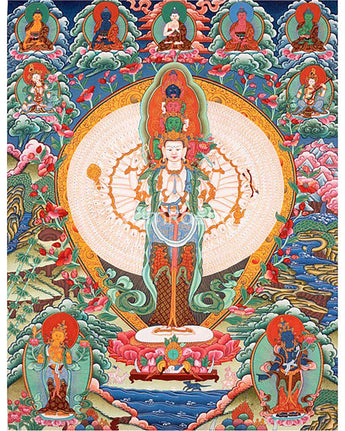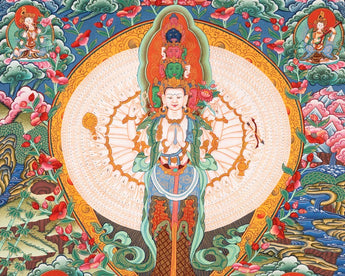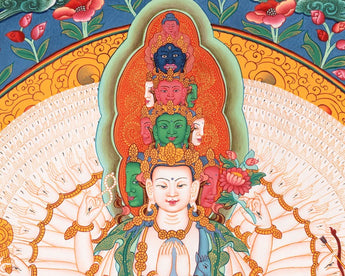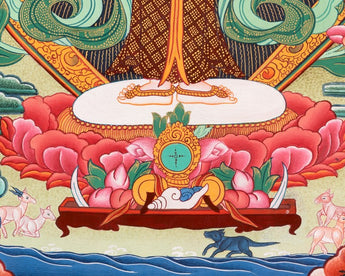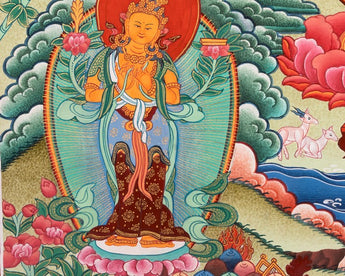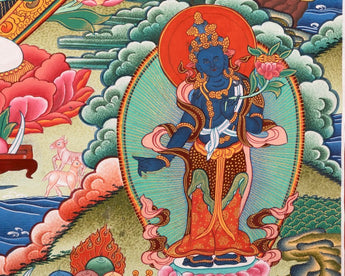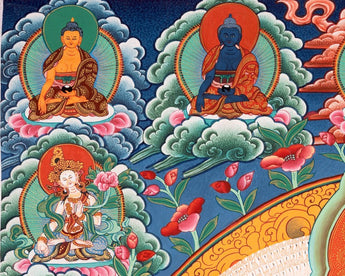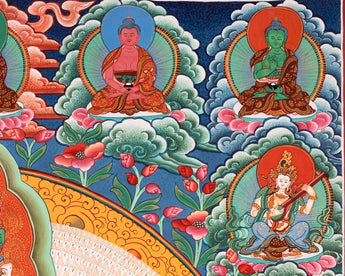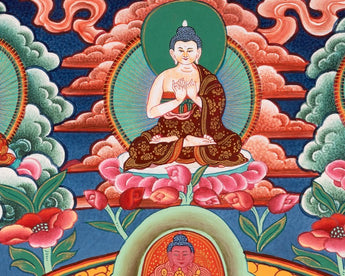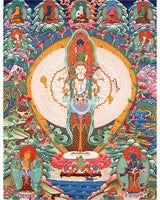
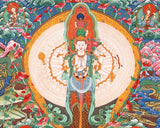


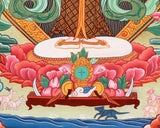
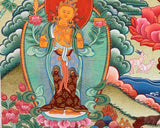
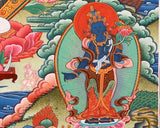
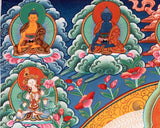
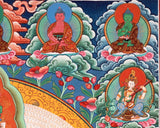
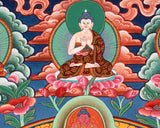
1000 Armed Avalokiteshvara | Chenrezig Thangka Art

100% AUTHENTIC

HANDPAINTED

FREE SHIPPING
1000 Armed Avalokiteshvara
Introduction To The Thangka :
Lokeshvara is dressed up with bracelets, earrings, and other jewelry. Along with carrying several weapons in his hands, he also sports an antelope hide over his shoulders. Avalokiteswara's cosmic form, Lokeshvara, is symbolized by eleven heads and a thousand limbs. He is wearing a monastic robe and has all six diamonds on him.
In addition, Lokeshvara is the spiritual father of White Tara and Green Tara, who are said to have been created from his two tears when he witnessed the anguish and suffering of sentient beings. All of them have major positions among the Tibetan Deities and are boddhisattvas (liberators of sentient beings from pain and suffering).
How does Thangka benefit us?
It goes without saying that every detail of a painting has a symbolic meaning. Regardless of your religious affiliation, a thangka can help you on your path to enlightenment, whether you practice Buddhism or have other religious convictions. Thangkas are paintings that depict deities with various iconographic elements and symbolism that encourage meditation on the teachings of the god they depict. Any thangka is intended to aid in the removal of the film of ignorance, which is a significant barrier to the road to enlightenment. The Thangka is revered as a holy item. They promote positivity, spread Buddhism's teachings, bring about peace, harmony, and oneness, and dispel any negative energy that may be there.
------------------------------------------------------------------
Size: 18"/ 46 cm (width) x 24"/ 61 cm (height)
Materials: Cotton Canvas, Acrylic Colors, Genuine 24K Gold
------------------------------------------------------------------
THIS THANGKA IS HAND-PAINTED IN THE TRADITIONAL STYLE BY NEPALI ARTIST, AND THE QUALITY IS HIGH
------------------------------------------------------------------
How to take care of your thangka?
-Regular Inspection of your thangka; examine the borders and all attachments.
-Keep thangkas covered when they are on display but not in use.
-Rotate thangkas between display and storage regularly, two to four times a year, to reduce the amount of exposure to light. Keep away from sunlight and humidity.
-Do not apply liquids or other materials to the surface of the thangka.
How to Take Care of Your Thangka?
- Hang your thangka in a traditional silk brocade.
- Regularly inspect your thangka; examine the borders and all attachments.
- Keep thangkas covered when they are on display but not in use.
- Rotate thangkas between display and storage two to four times a year to reduce exposure to light. Keep them away from sunlight and humidity.
- Do not apply liquids or other materials to the surface of the thangka.


